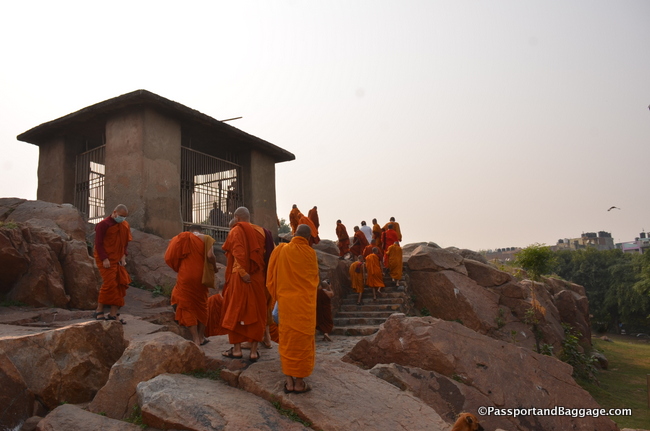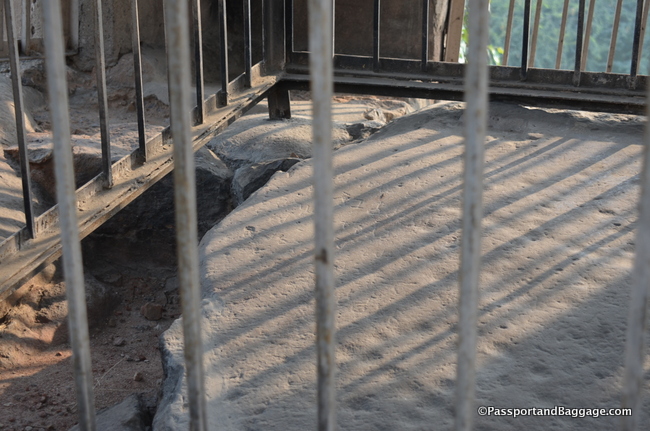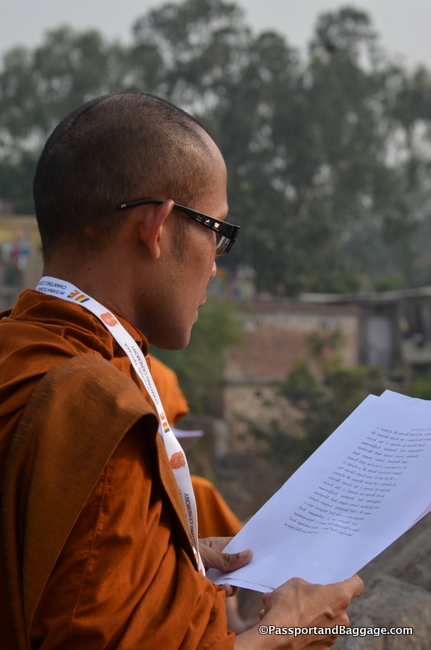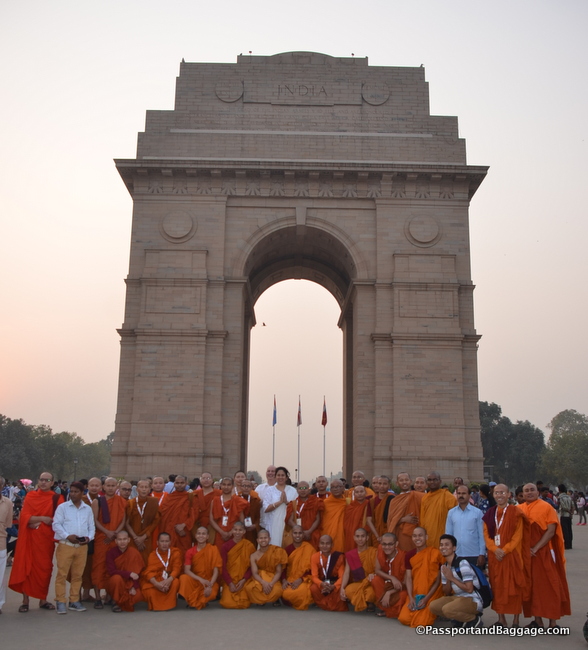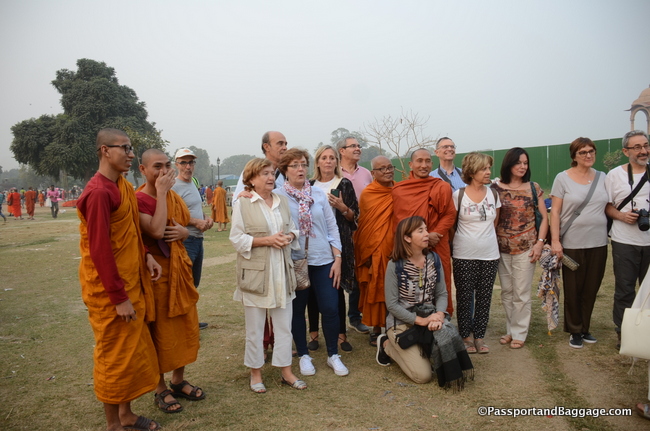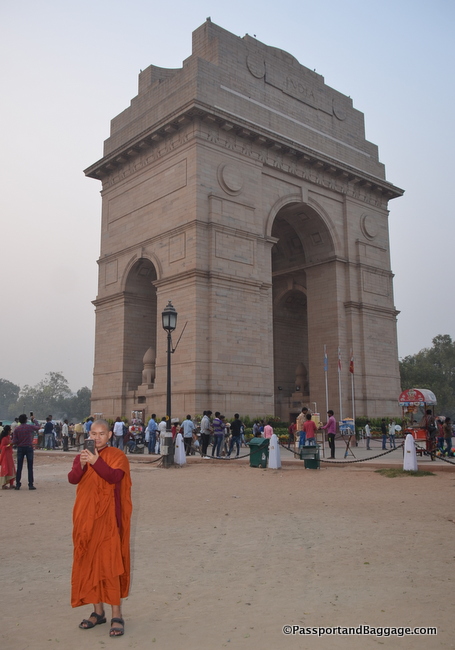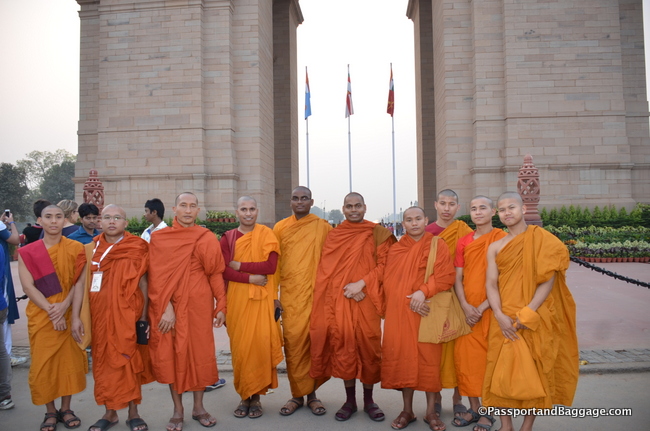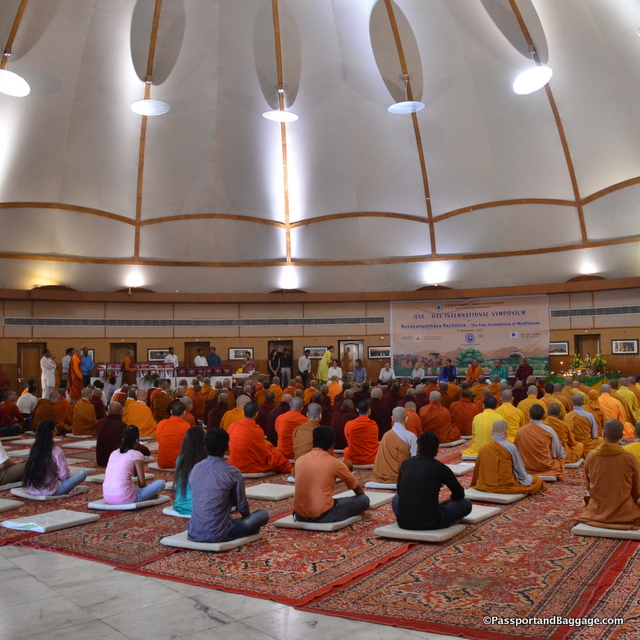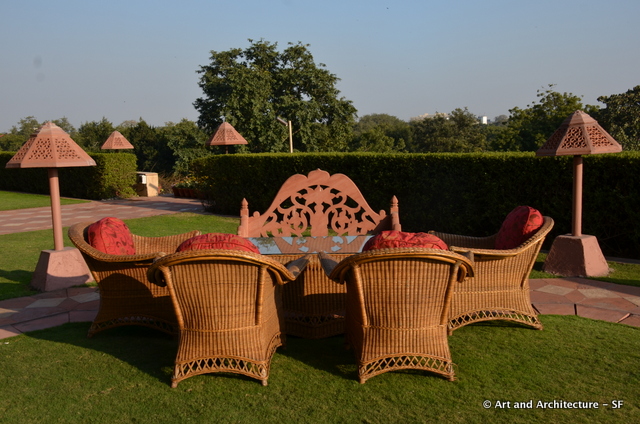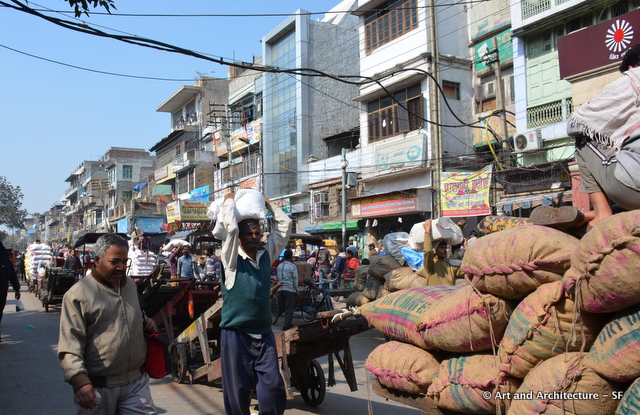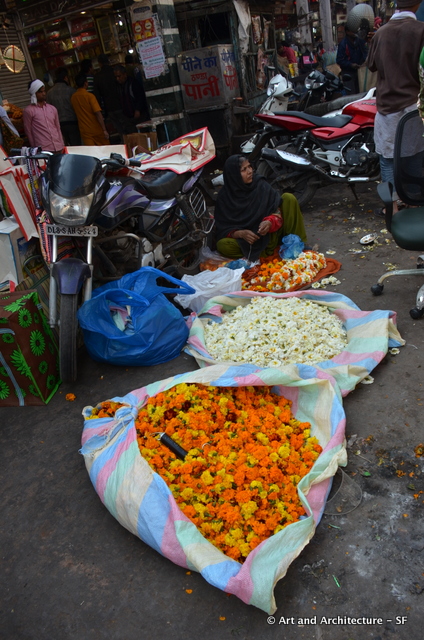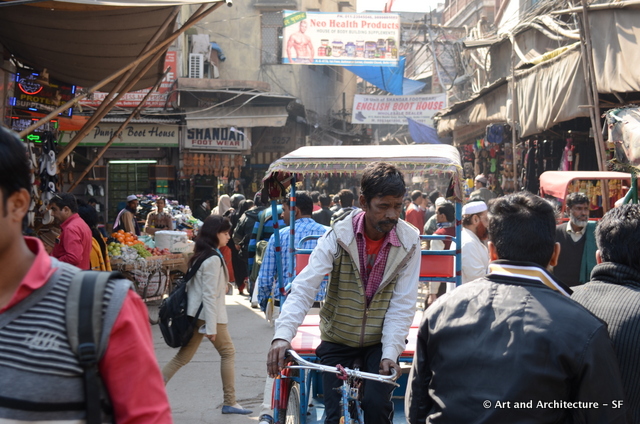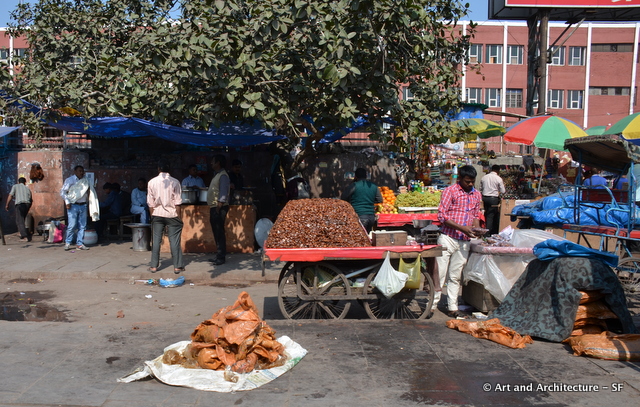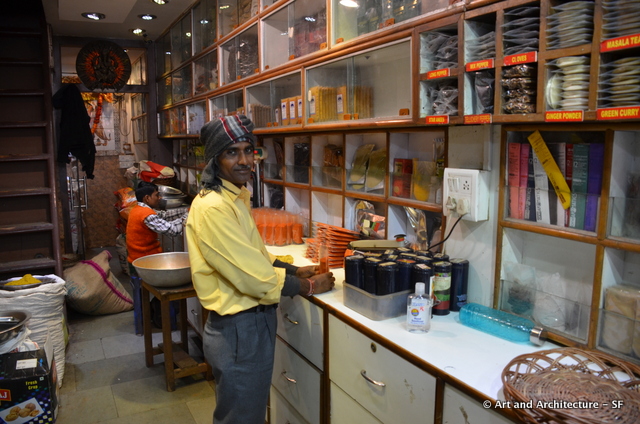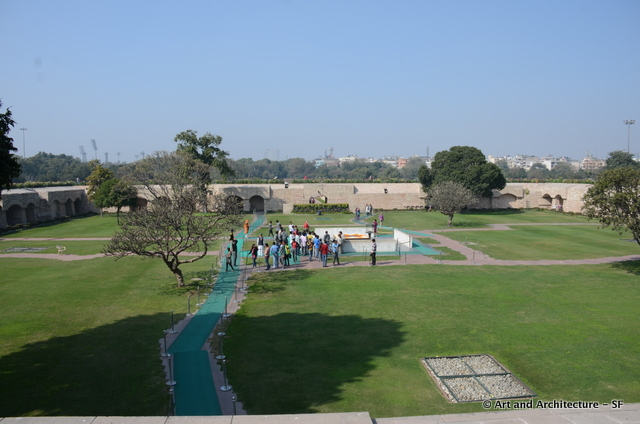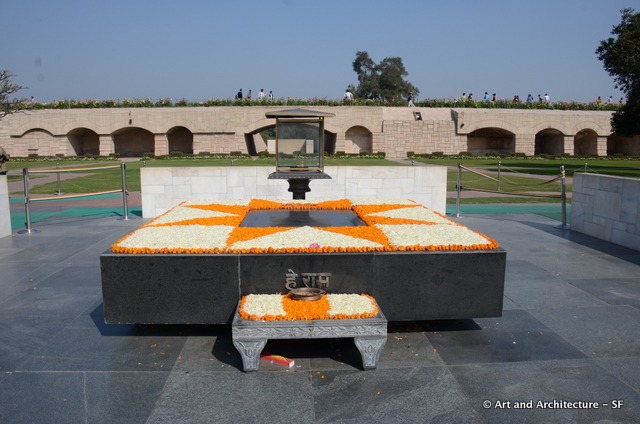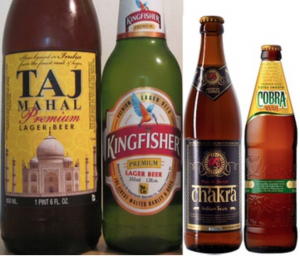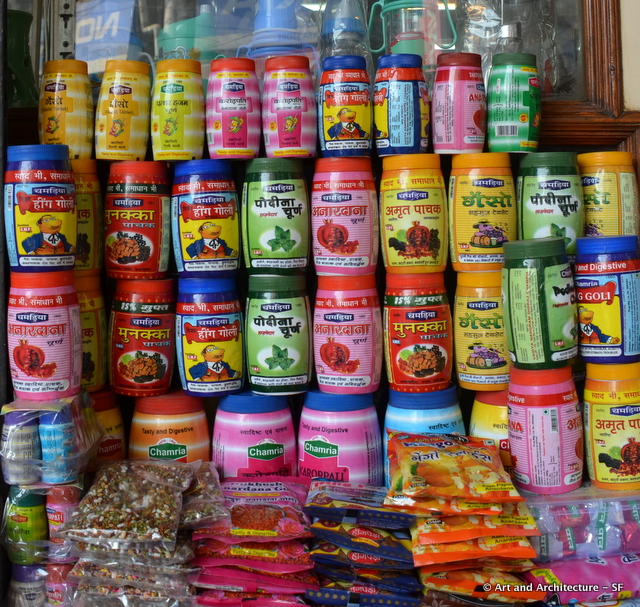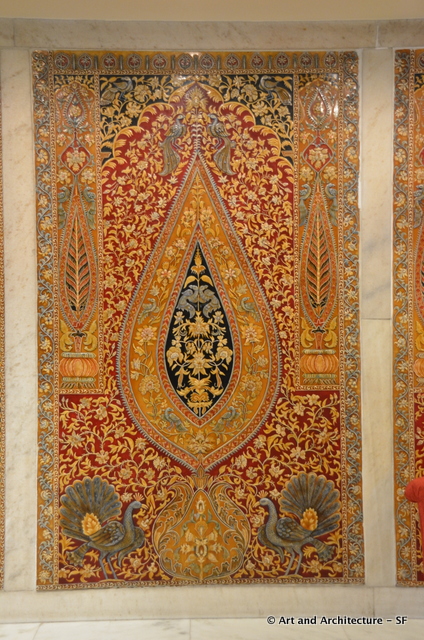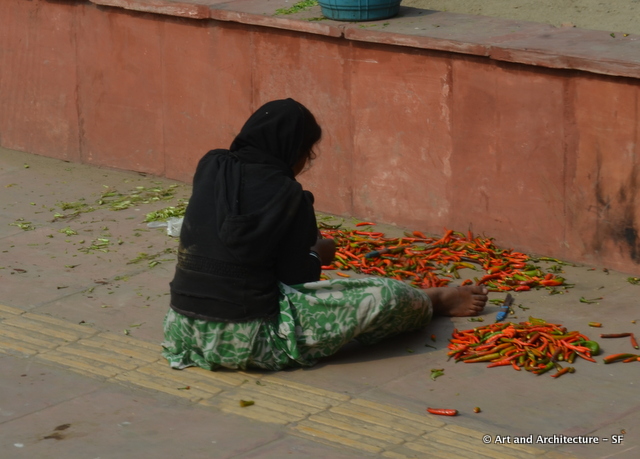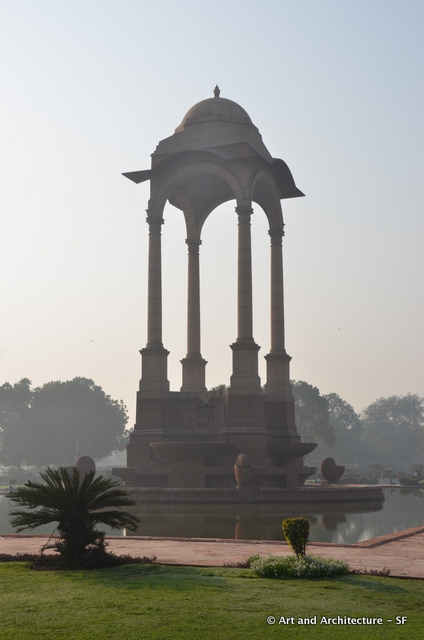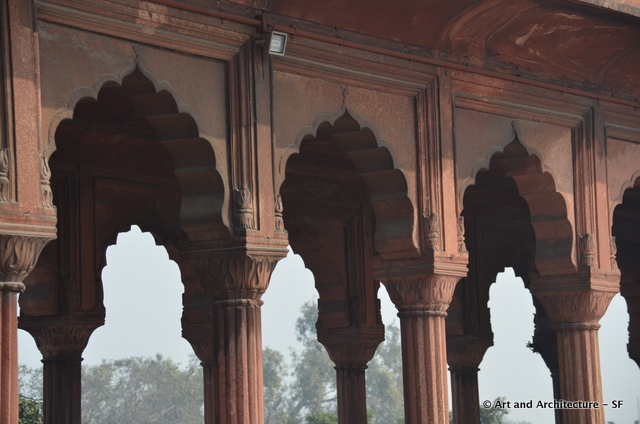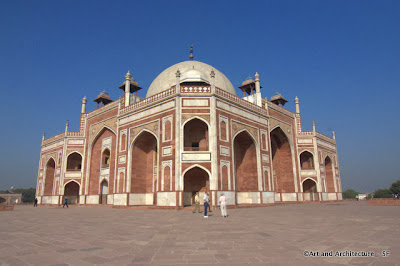We spent the day and night at the Sri Aurobindo. It is an Ashram that was begun in Pondicherry with the Delhi campus built in the 1950s.
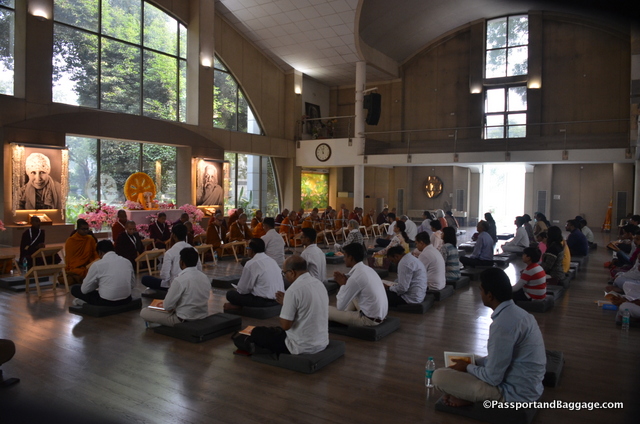
Sri Aurobindo Ashram Temple
The ashram was our host for an all day chanting ceremony and a Dharma talk. We also ate our meals there and spent the night.
Wikipedia description: “The ashram grew out of a small community of disciples who had gathered around Sri Aurobindo after he retired from politics and settled in Pondicherry in 1910. In 1926, after a major spiritual realization, Sri Aurobindo withdrew from public view in order to continue his spiritual work. At this time he handed over the full responsibility for the inner and outer lives of the sadhaks (spiritual aspirants) and the ashram to his spiritual collaborator, “the Mother”, earlier known as Mirra Alfassa. This date is therefore generally known as the founding-day of the ashram, though, as Sri Aurobindo himself wrote, it had “less been created than grown around him as its center.”
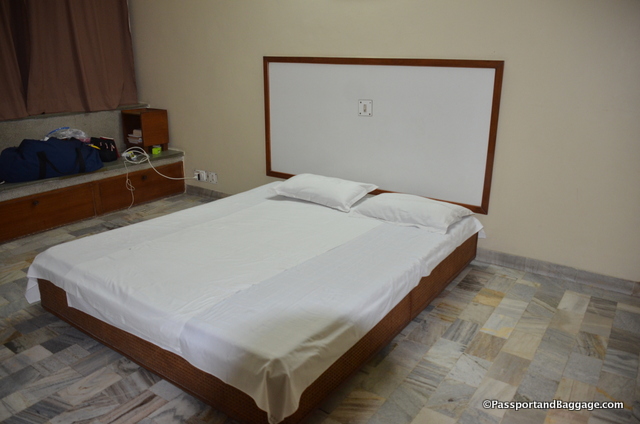
My bed at the ashram, the bed at GBU the next night was identical
First, the place is architecturally interesting and sound, but it is as Spartan as one can get.
I actually learned a few things while there. First, ashrams provide nothing, so bring your own toilet paper and soap at least. You are given one bath towel, mine would have made a truly lovely lace curtain.
I learned that I can, in fact, sleep on a board. Despite the look of the bed, the 1” mat was not foam but a solid surface as hard as a wooden board, that being said, I am learning that is the norm when westerners are not your customers.
There is but one sheet covering the mattress, there is no top sheet, and while there were blankets in the closet, it was much too warm for one, and without the protection of a top sheet, I just wasn’t about to climb under one.
As I post this I am on my third bed like that, so I have to admit it is probably more the norm for the smaller, lower budget hotel. It is understandable when you consider most beds in India look like this.
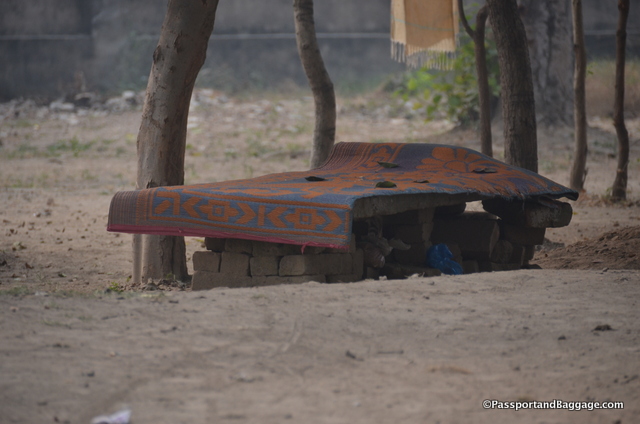
*
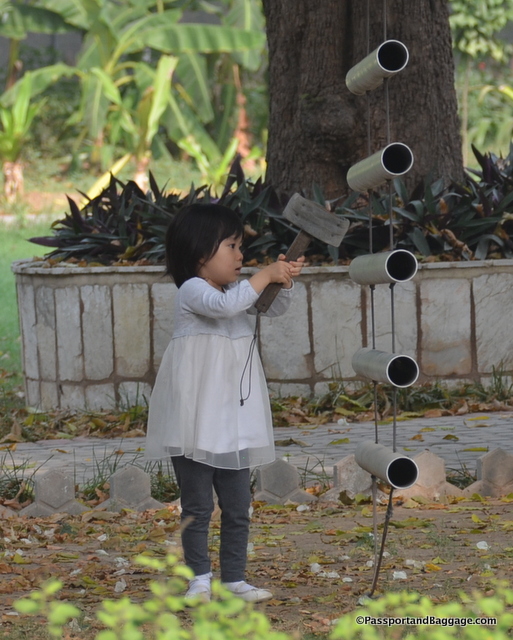
There was a Japanese couple staying at the Ashram, this is their little girl attempting to gong the gong.
Now, it is not a hotel, it is more a youth hostel, but the truth is it is filled with people with nowhere else to go. I met a truly beautiful old lady that lives there, and when the monks asked if she paid, she said she gives a donation. Those are the reasons that it has become more of a small community of the infirmed and the lost, than an ashram.

This is Jayden. He is as American as apple pie, but his parents are Thai. He spends his summer in Thailand learning to be a monk. Not his fate necessarily, think of it as church camp
We did the chanting in a stunning building, which means there is money for superficial things.
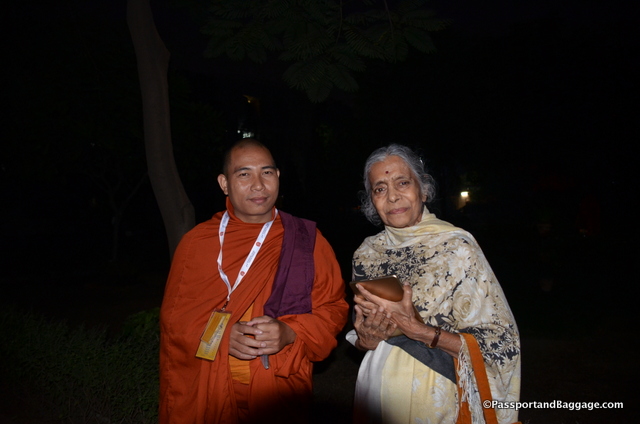
This lady was very special to me. She sought me out and explained that she had been a child, and her father a doctor, in Burma during WWII. She had fond memories of the Burmese and hoped I would introduce her to a Burmese monk. I did and they loved her as much as she was thrilled at speaking with her and we all listened as her Burmese came back, it was a very special moment.
The food consisted of rice and potatoes cooked Indian style. More importantly, it is served on the type of tin trays and tin cups that remind you of prison. Then, you wash your own dishes. I have absolutely no problem with washing my own dishes, but you realize that the guy that washed the plate and fork before you might not have been as careful as you, and all of a sudden you have lost your appetite. I did not really eat here, after the concept of a dirty fork, which really did not put me off from eating, I realized I just could not take a three-meal diet of white rice and white potatoes. I have grown to love Indian chai, despite the sugar, but this even was scrimped upon, no masala, so no flavor.
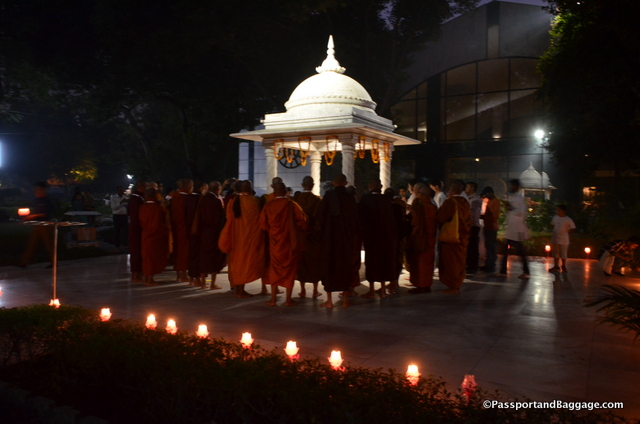
The day ended with a stunning candlelight procession
Thank goodness for Ranjan (our point man on the ground in India), he took me to a corner place for dinner that served chicken and fish, and we ate well. I ran into Thai/American Nadia and her son Jayden and we had a blast. That made sleeping on a piece of wood, after a large dose of Advil, possible.
Our next stop was Gautaum Buddha University for a conference, then chanting at the end of the conference.
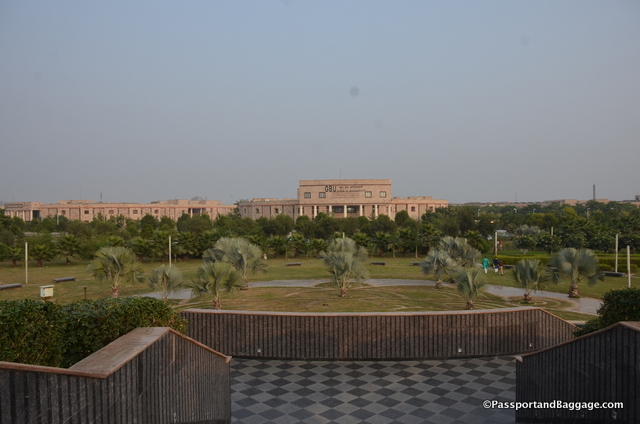
The temple at GBU
The university was essentially pushed through by a woman in government, its campus is huge. At the same time, they are under utilized and falling into ridiculous disrepair. It reminded me of walking around a 1960s Soviet establishment, hard surfaces, bare plantings, and flaking paint.
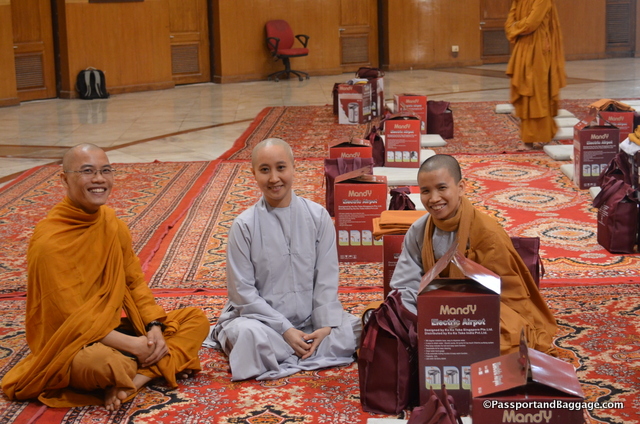
I love the nuns, they are always quick with a smile
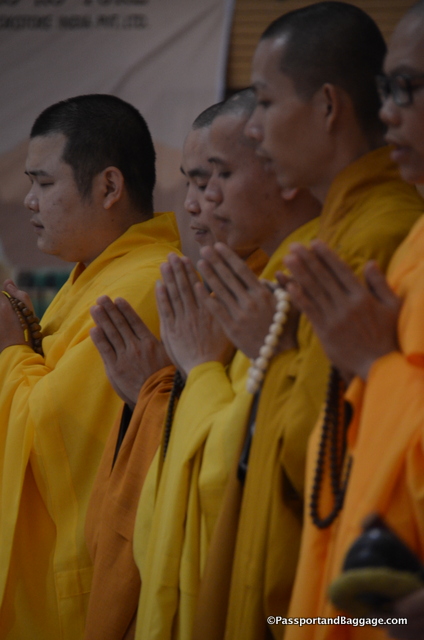
We were joined by Chinese monks at GBU, their chanting uses drums and is really lovely and a bit different
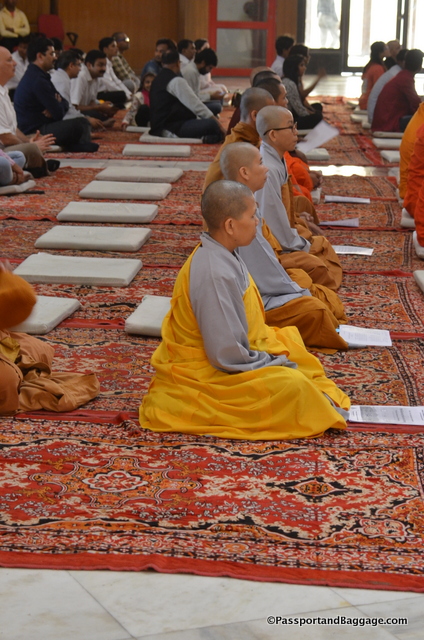
The nuns at the chanting ceremonies don’t get enough attention in my opinion. It is a very male dominated situation.
I experience another night of wood bed and no shower, but at least this time the food was pretty good.
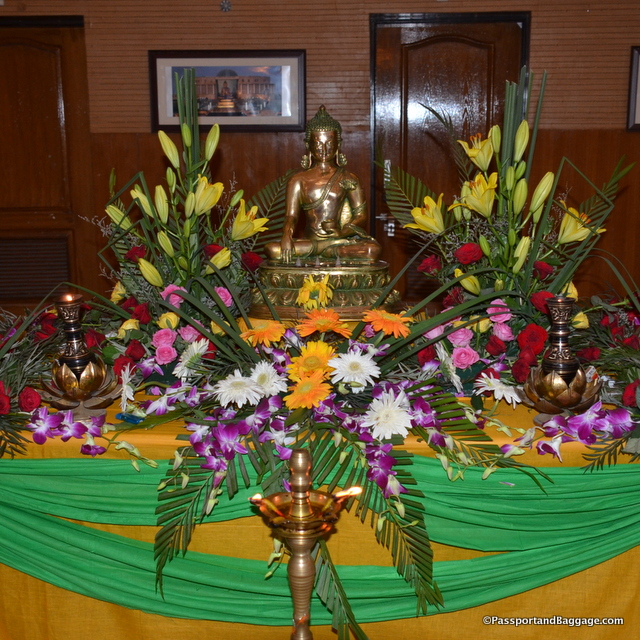
The alter for the GBU ceremony
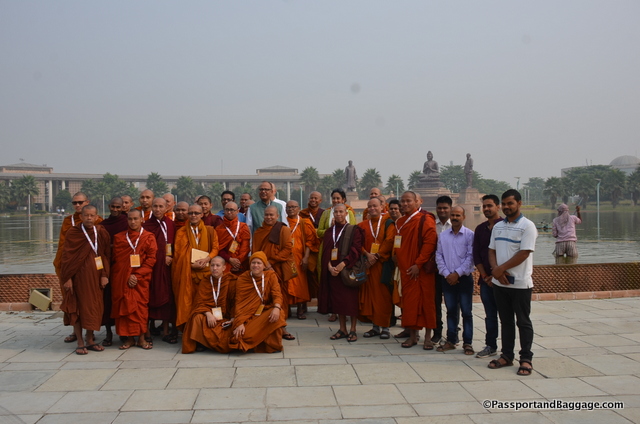
Another group photo – this one at GBU, the giant Buddha in the back was one reason I loved this shot
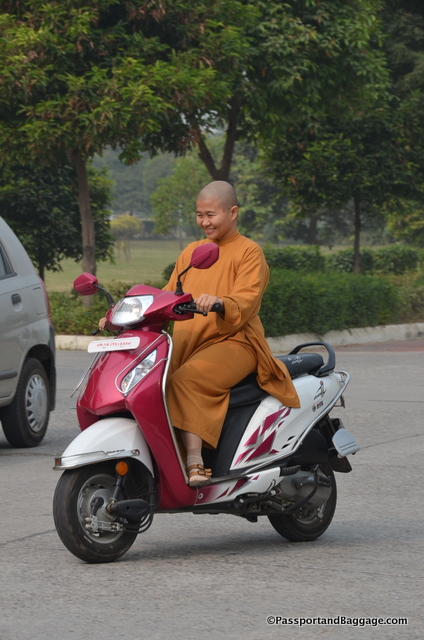
So just as I am getting adjusted to Monks with cell phones and iPads, I see this coming down the street.
Off to Sankasya, an ancient site I am looking so very forward to exploring.
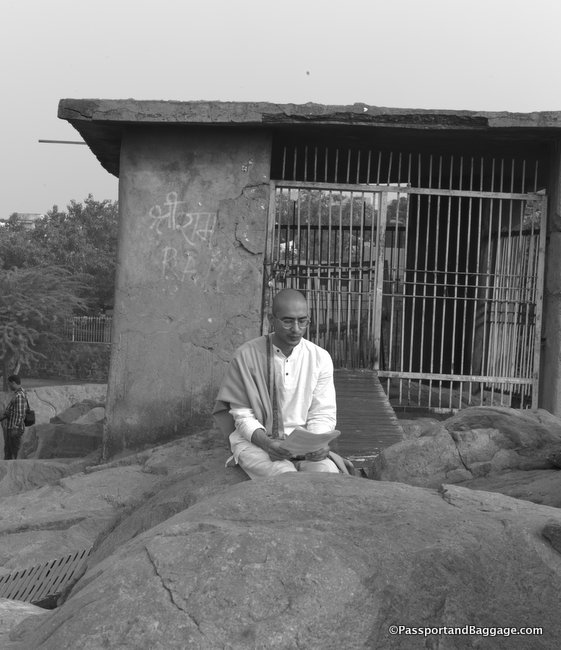 *
*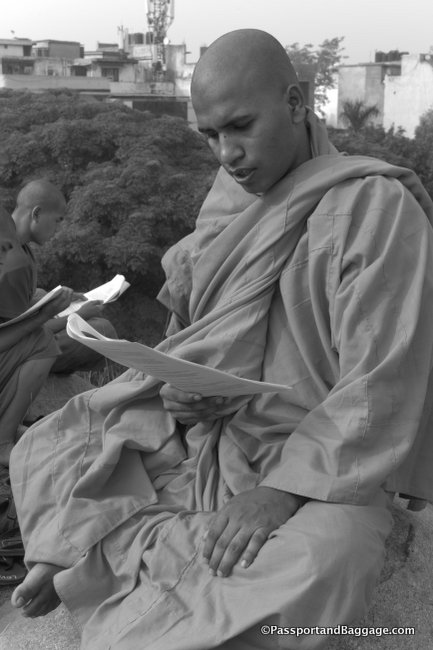 It is thought that the reason it is here is that it once sat on a trans-regional trade route of North India, an ancient trade link between the Gangetic Delta and the northwestern part of the Indian subcontinent. A second view is that it marks the site of a temple.
It is thought that the reason it is here is that it once sat on a trans-regional trade route of North India, an ancient trade link between the Gangetic Delta and the northwestern part of the Indian subcontinent. A second view is that it marks the site of a temple.